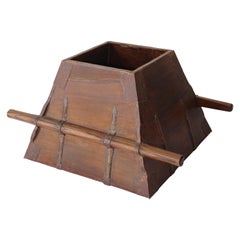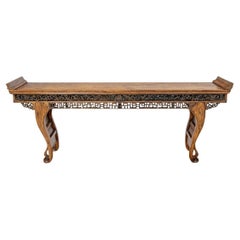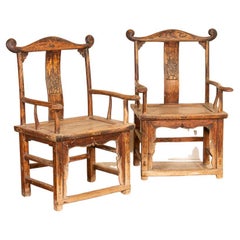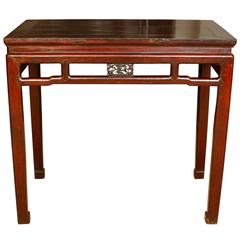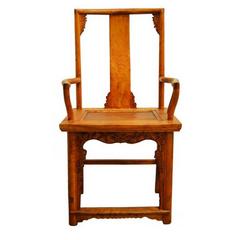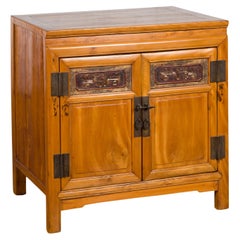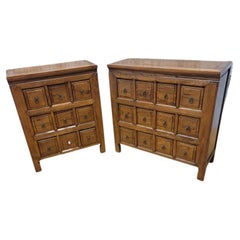Elmwood Chinese Antique Furniture
Antique Late 19th Century Chinese Chinese Export Decorative Baskets
Elm
Early 20th Century Chinese Ming Furniture
Elm
Antique Mid-19th Century Chinese Side Chairs
Wood, Elm
Vintage 1970s Mid-Century Modern Cabinets
Elm
Early 20th Century Chinese Chinoiserie Furniture
Elm
Antique 19th Century Chinese Furniture
Wood, Elm
Early 20th Century Chinese Coffee and Cocktail Tables
Elm
Early 20th Century Chinese Cabinets
Elm
Antique 19th Century Chinese Mission Apothecary Cabinets
Wood, Elm
Early 20th Century Chinese Blanket Chests
Elm
Antique Late 19th Century Chinese Chinese Export Furniture
Wood, Elm
Early 20th Century Chinese Chinese Export Furniture
Elm
Antique 19th Century Chinese Coffee and Cocktail Tables
Elm, Wood
Early 20th Century Chinese Chinese Export Furniture
Wood, Elm, Lacquer
Antique Late 19th Century Chinese Chinese Export Furniture
Wood, Elm
Early 20th Century Chinese Chinese Export Furniture
Elm, Bentwood
Early 20th Century Chinese Chinese Export Furniture
Elm, Paint
Early 20th Century Chinese Chinese Export Furniture
Elm, Lacquer
Early 20th Century Chinese Coffee and Cocktail Tables
Elm
Early 20th Century Chinese Chinese Export Furniture
Elm
Early 20th Century Chinese Chinese Export Furniture
Wood, Elm
Early 20th Century Chinese Chinese Export Furniture
Elm, Lacquer
Early 20th Century Chinese Chinese Export Furniture
Wood, Elm, Lacquer, Paint
Early 20th Century Chinese Chinese Export Furniture
Elm, Lacquer
Antique Late 19th Century Chinese Rustic Furniture
Wood, Elm, Softwood
Early 20th Century Chinese Chinese Export Furniture
Wood, Elm, Lacquer
Antique Late 19th Century Chinese Chinese Export Cabinets
Wood, Elm
Early 20th Century Chinese Rustic Cabinets
Elm
Antique Late 19th Century Chinese Chinese Export Furniture
Elm, Lacquer, Paint
Early 20th Century Chinese Chinese Export Furniture
Wood, Elm, Lacquer
Mid-20th Century Chinese Rustic Furniture
Wood, Elm, Lacquer, Paint
Early 20th Century Chinese Chinese Export Furniture
Rattan, Elm, Bentwood
Early 20th Century Chinese Qing Side Chairs
Elm
20th Century Chinese Furniture
Wood
Antique Late 19th Century Chinese Furniture
Wood
Antique Late 19th Century Chinese More Asian Art, Objects and Furniture
Wood
Antique 18th Century and Earlier Chinese Benches
Antique 18th Century and Earlier Furniture
Marble
Antique Late 19th Century Chinese Side Tables
Wood
Antique 19th Century Chinese Furniture
Wood
Early 20th Century Chinese Furniture
Wood
Early 20th Century Chinese Furniture
Wool
Antique Early 19th Century Chinese Furniture
Wood
Antique Mid-19th Century Chinese Furniture
Wood
Antique Late 18th Century Chinese Qing Furniture
Antique Late 19th Century Chinese Ming Antiquities
Elm
Antique 19th Century Chinese Rustic Benches
Wood, Elm
Antique 19th Century Chinese Stools
Wood, Elm
Antique 19th Century Chinese Chinese Export Furniture
Elm
Late 20th Century Chinese Chinese Export Furniture
Elm
Antique Late 19th Century Chinese Furniture
Antique 19th Century Chinese Rustic Benches
Wood, Elm
20th Century Asian Rustic Stools
Elm
Antique 19th Century Chinese Side Tables
Vintage 1920s Chinese Chinese Export Antiquities
Elm
Early 20th Century Chinese Scholar's Objects
Elm
Antique Late 19th Century Chinese Qing End Tables
Elm
Antique 19th Century Chinese Furniture
Brass
Antique 19th Century Chinese Sideboards
Antique 19th Century Chinese Sideboards
Elm
- 1
Elmwood Chinese Antique Furniture For Sale on 1stDibs
How Much is a Elmwood Chinese Antique Furniture?
- 1stDibs ExpertNovember 4, 2024To identify antique Chinese furniture, look carefully at its details. Chinese craftsmen often built furniture using mortise and tenon joinery, eliminating the need for nails and screws. If you see this type of hardware, your piece is likely not at least 100 years old, especially if the hardware still looks new and shiny. Since antique furniture was handmade, you will normally see slight imperfections, such as tool marks or slight variations in carvings. Pieces that appear completely uniform and pristine are less often genuine antiques.
When present, maker's marks can also be helpful. Research the marks to learn more about when the maker was active and producing pieces like yours. Alternatively, you can have a certified appraiser or experienced antique dealer evaluate your furniture for you.
Shop an assortment of antique Chinese furniture.  PAGODA REDOctober 7, 2020
PAGODA REDOctober 7, 2020To determine the age of a Chinese furniture piece, look carefully at the joinery and finish. Natural expansion and contraction of the wood over time will cause a joint to protrude or retract, distorting a once-seamless fit. Antique lacquer finishes become crackled and worn over time. Areas of exposed wood, such as the underside of a table, the footrest of a chair, or the back of a cabinet should appear raw and dry compared to the finished surface. With use, the legs of tables and chairs become weathered near the bottom from precipitation and use.
